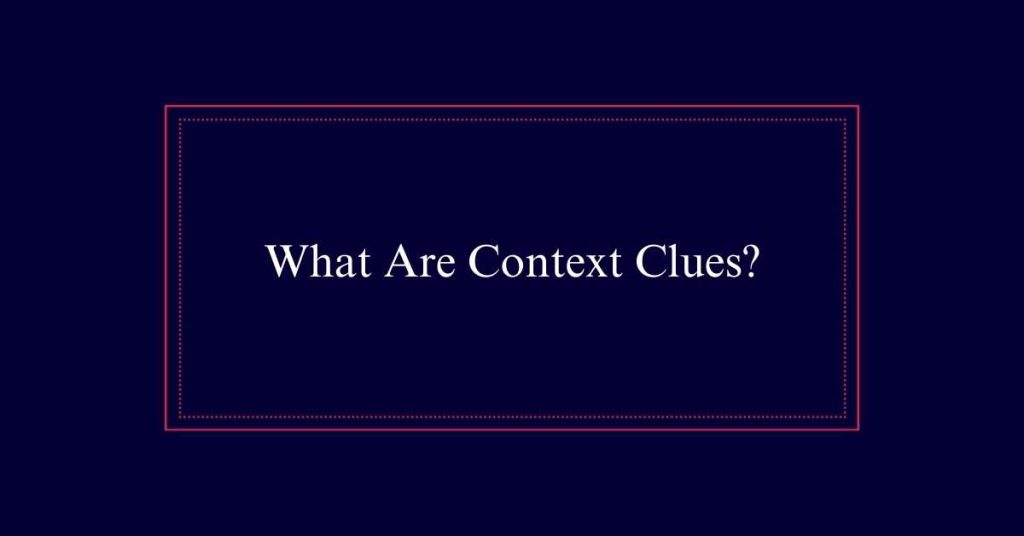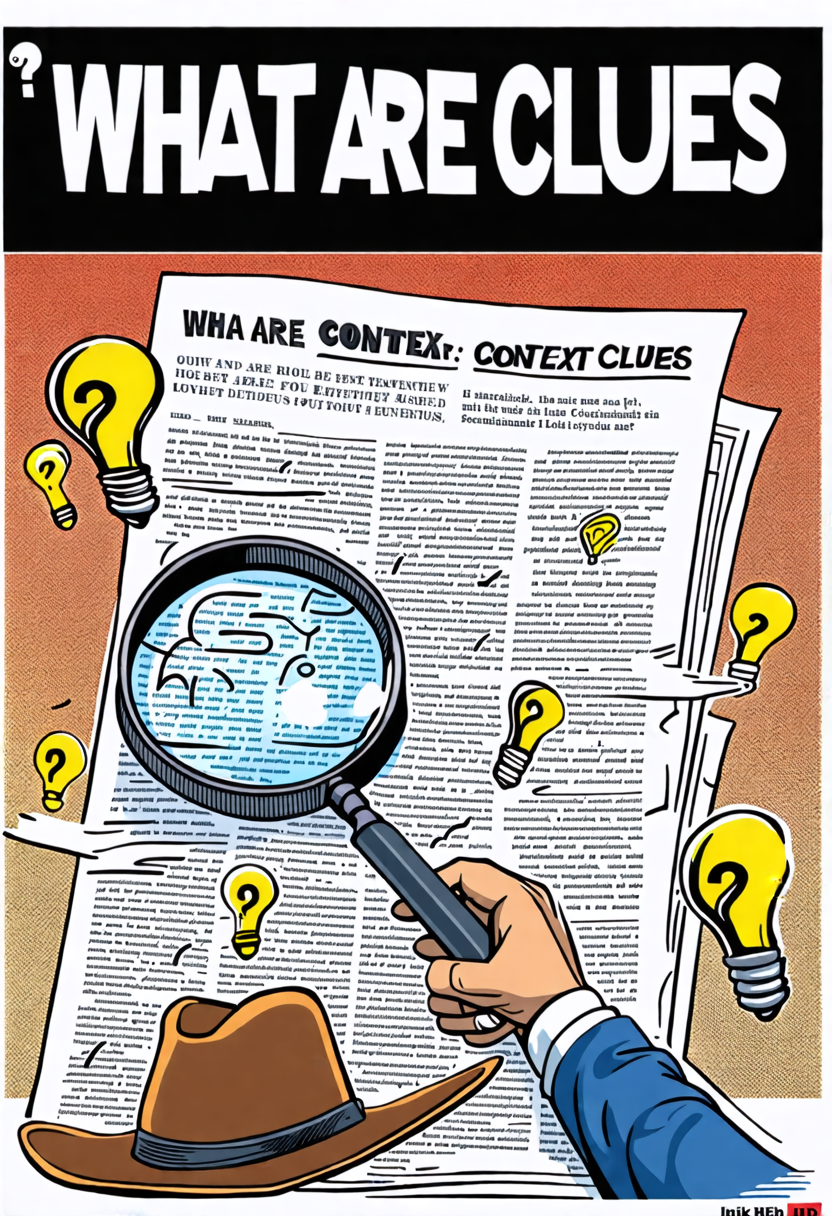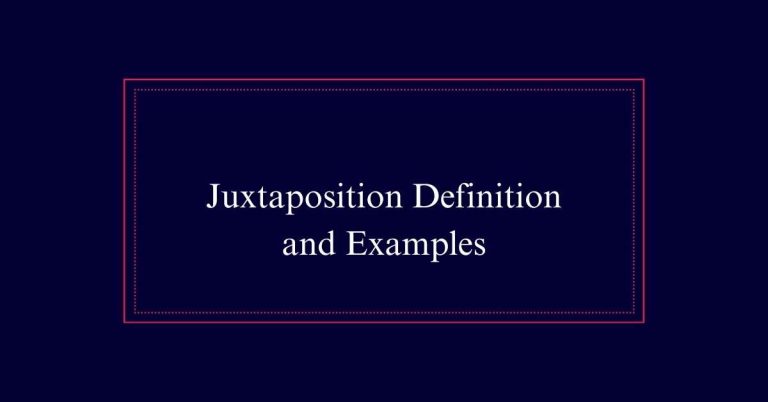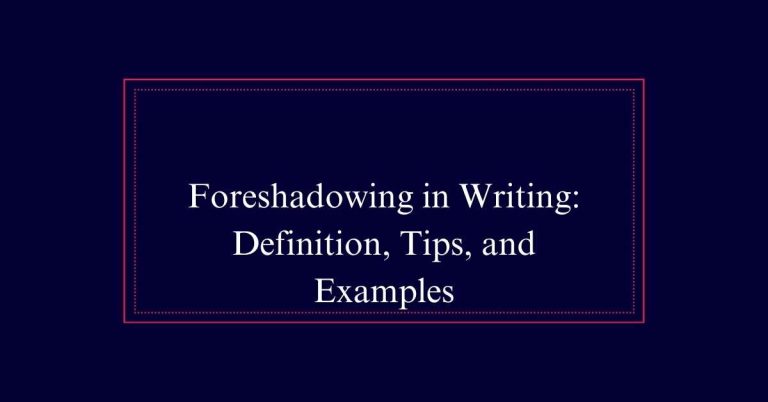What Are Context Clues?
Context clues are hints in the text that help you understand the meaning of unfamiliar words without using a dictionary. They can be found in sentences, paragraphs, or surrounding words and include definitions, examples, synonyms, and antonyms. Using context clues makes reading faster and keeps you focused. They improve your vocabulary and comprehension skills by letting you figure out tricky words instantly.
Definition of Context Clues
Context clues are hints in the text that help you figure out the meanings of unfamiliar words. They make reading faster because you won’t need to stop and look up words in a dictionary.
These clues can be found in sentences, paragraphs, or the surrounding words. They might include definitions, examples, synonyms, or antonyms. Sometimes, a word’s meaning is explained right there in the sentence. Other times, you’ll see examples that show what the word means.
Synonyms are words that mean the same, giving you a quick hint. Antonyms show the opposite meaning, helping you understand through contrast. By using these hints, you can understand tricky words on your own and improve your reading skills.
Importance of Context Clues
Using context clues is essential because they help you understand unfamiliar words without needing a dictionary. They save you time and keep you focused on your reading. When you come across a tricky word, context clues let you figure it out on the spot. This makes your reading smoother and more enjoyable.
Context clues don’t just make reading faster; they also make you a better reader. You’ll build a stronger vocabulary and improve your comprehension skills. You’ll learn to think critically and make connections between ideas.
Types of Context Clues
You’ll find several types of context clues that can help you understand unknown words. Examples show how a word is used in different contexts.
Synonyms provide words with similar meanings. Antonyms or contrasting words highlight differences and signal contrasts.

Root words and affixes give hints about a word’s base meaning and structure. These clues are sprinkled throughout sentences and paragraphs, making them useful tools for decoding unfamiliar words.
By recognizing these types of context clues, you’ll boost your reading comprehension and expand your vocabulary. It’s like being a detective, piecing together hints to uncover the meaning.
In-text Definitions
One of the easiest context clues to spot is an in-text definition. You find these clues when a sentence directly explains a tricky word. For example, ‘The arboretum, a place where trees and shrubs are cultivated, was beautiful.’
Here, the phrase ‘a place where trees and shrubs are cultivated’ tells you what ‘arboretum’ means. Look for commas, dashes, or parentheses to find these definitions. They often follow the word they define.
Using in-text definitions helps you quickly understand new vocabulary without needing a dictionary. It’s like having a mini glossary right in the text. Next time you read, keep an eye out for these helpful hints. They make reading smoother and more enjoyable.
Examples as Clues
Examples often provide clear clues to help you understand unfamiliar words in a text. When you come across a new word, look for examples nearby. These examples can show you how the word is used in context.
For instance, if you read about ‘arboreal animals like monkeys and sloths,’ you can infer that ‘arboreal’ means something related to trees. By seeing how the word fits with known examples, you can grasp its meaning without needing a dictionary.
Always pay attention to such examples as they simplify complex words. Practice spotting these clues, and you’ll find it easier to understand new vocabulary while reading.
Synonyms for Understanding
Synonyms can help you understand tricky words by offering a direct comparison. When you see a word you don’t know, look for a synonym nearby. This similar word can make the meaning clear. Using synonyms as context clues is a quick way to expand your vocabulary without needing a dictionary.
Here are some tips to spot synonyms in a text:
- Look for words separated by commas or dashes.
- Notice words that appear in parentheses.
- Watch for phrases like ‘that is’ or ‘in other words.’
- Pay attention to repeated ideas in different words.
- Check if the sentence restates a concept using new terms.
Antonyms and Contrast
Just as synonyms offer clarity, antonyms and contrasting words can help you understand unfamiliar terms by showing what they don’t mean.
When you see a word you don’t know, look for words that express the opposite idea. These are often signaled by words like ‘but,’ ‘however,’ or ‘instead.’
For example, if a sentence reads, ‘The day was gloomy, not cheerful,’ you can infer that ‘gloomy’ means the opposite of ‘cheerful.’ By identifying these contrasting words, you can better grasp the meaning of the new term.
This technique is especially useful because it uses familiar concepts to explain new ones. Practice finding antonyms and contrasts to improve your reading comprehension skills.
Root Words and Affixes
Root words and affixes can help you decode many unfamiliar words. By understanding the base of a word and its added parts, you can often figure out its meaning.
Root words are the core part of a word, while affixes are prefixes or suffixes added to change its meaning.
Here are some tips to use root words and affixes:
- Identify the root: Look for the main part of the word.
- Check the prefix: See if there’s a beginning part that alters meaning.
- Look at the suffix: Notice any ending that changes the word’s function.
- Combine meanings: Put together the root and affix meanings.
- Practice: Regularly look for root words and affixes in your reading.
Understanding these parts makes new words easier to understand.
Finding Context Clues
Start by paying attention to the words and sentences around the unfamiliar term. Look for hints that explain, define, or give examples of the word. You might find synonyms, antonyms, or descriptive phrases that clarify the meaning. Use the table below to guide your search for context clues:
| Clue Type | Example Sentence |
|---|---|
| Definition | The arboretum, a place where trees are grown… |
| Synonym | The ancient, or very old, artifact was found… |
| Antonym | Unlike his gregarious brother, he was shy… |
| Example | She loved citrus fruits like oranges, lemons… |
Benefits of Context Clues
Using context clues enriches your vocabulary and enhances your critical thinking skills. When you learn to use these clues, you engage more deeply with texts. This skill empowers you to tackle challenging material confidently, improving your overall reading experience.
Here are some key benefits of using context clues:
- Vocabulary Growth: You’ll learn new words without needing a dictionary.
- Enhanced Comprehension: Understand complex material more easily.
- Critical Thinking: Develop your ability to analyze and infer meanings.
- Reading Efficiency: Read faster without getting stuck on unknown words.
- Confidence Boost: Feel more assured when reading difficult texts.







